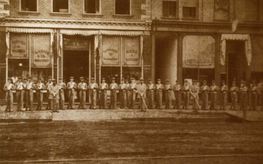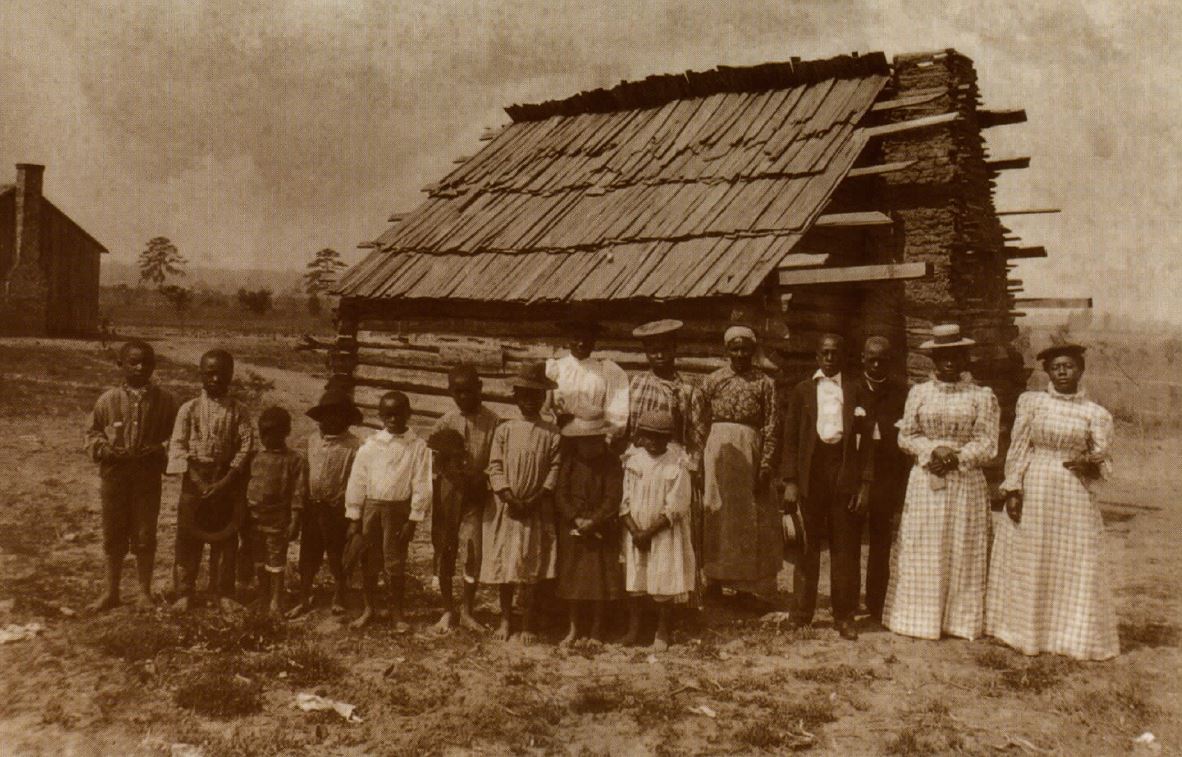 Circa 1890, Trippe photographed the Selma Guards (Co. A, 3rd Infantry, Alabama State Troops), the group in which he served for thirteen years, eventually becoming captain. (Courtesy Alabama Department of Archives and History)
Circa 1890, Trippe photographed the Selma Guards (Co. A, 3rd Infantry, Alabama State Troops), the group in which he served for thirteen years, eventually becoming captain. (Courtesy Alabama Department of Archives and History) Five years after the war's end, Trippe found employment in Hobb's Jewelry store in Selma. He must have adapted well to his new community because he not only remained with the store for the next twenty-five years but also served for thirteen years with a local militia unit, the Selma Guards. Eventually, he was elected captain. In his spare time, Trippe took photographs.
Probably the best known of his images are those he took of the Apache Indians between 1888 and 1894, when they were imprisoned by the U.S. Army at Mount Vernon, Alabama. Several of these images appeared in the Winter 1997 issue of Alabama Heritage (No. 43), in the article "Geronimo and the Chiricahua Apaches." Trippe also documented his adopted hometown of Selma, as well as ocher sites in Dallas County, including the race's former capital at Cahawba.
Trippe died in 1907. Three years later, his widow donated nearly thirty images taken by her husband to the Alabama Department of Archives and History. These are now housed in the Silas Orlando Trippe Photograph Collection. Some of the images have been published in Memories of Old Cahaba by Anna Fry (Nashville: Publishing House of the M.E. Church, South, 1908, 1972) and The Curse of Cahawba by Charles Reed (Chicago: P. Covici, 1925).
CORRECTION: Some of the photography for this feature was erroneously attributed to Silas O. Trippe in the print version of this feature. The images of Native Americans at Mount Vernon Barracks were made by C. C. Johnson and possibly his brother and appeared in Frank Leslie's Illustrated Weekly on June 21, 1891.
This feature was previously published in Issue 48, Spring 1998.
Author
Alden Monroe is Assistant Director for Special Collections, Alabama Department of Archives and History.

 RSS Feed
RSS Feed